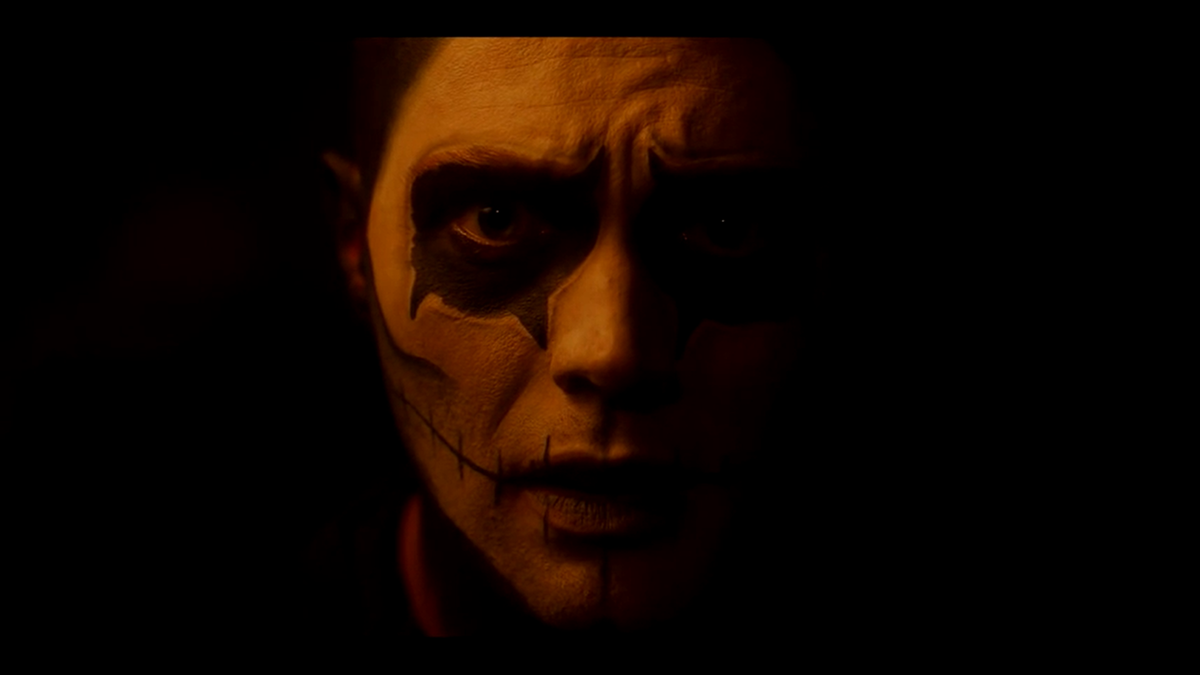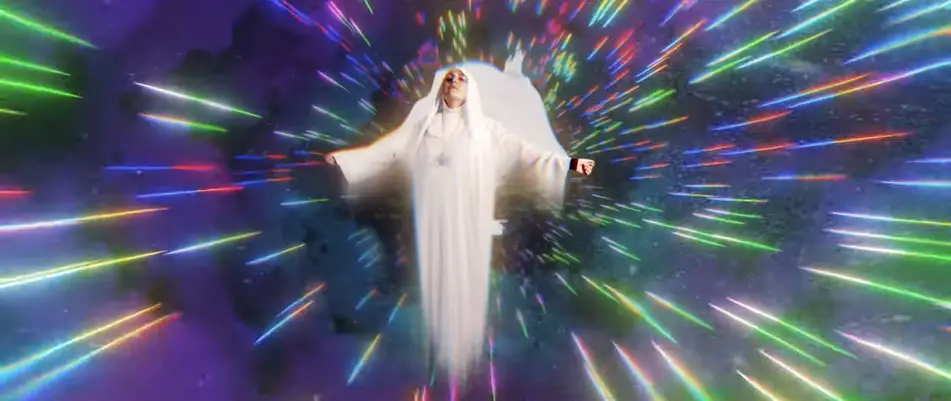
photo credit: Justin Mane’s Crow, 2022
You might not believe me, but the modern groundbreaking filmmaking isn’t coming from major studios. The most heartfelt, intelligent, and thought-provoking work I’ve seen in the last few years was all made by unofficial channels by people who otherwise might never have gotten the chance to work on a film project. If you follow me on this journey, you won’t always get work that is the most polished or well funded, but you will always walk away having seen something unique and thought-provoking, that you will be proud to have given a chance.
What is Fandom Underground?
This will be a regular series involving discussions with some of the most underrated filmmakers of the day. Its consistency will be based on my ability to meet with them, so it will be difficult to predict how often the series will be updated. This series is going to be a resource for underappreciated work to see the light of day, and for you to get to know the people who put their heart and soul (as well as a substantial amount of time and money) into these projects. I intend to wage a war on behalf of this unduly stigmatized subgenre, and prove to you the value of seeking out underground film and, just maybe, encourage you to make it yourself. Fan films feature a community of people passionate about their craft, and willing to accept newcomers into their midst. I won’t feature any of my personal projects in this series, but I can say that I was welcomed with open arms into this group.
What I won’t be doing (beyond this article) is comparing these works to the professional productions they are related to. Fandom Underground is a tribute to the down-trodden, not a diatribe on the state of modern media. Those who spend all of their time tearing down Disney’s current endeavors are putting all of their efforts in the wrong place. Most of the advertising I’ve seen for She-Hulk and the Rings of Power has come from those complaining about them. Actively playing into someone’s hands to promote their product accomplishes nothing. If you really want to see better in the world, you have to look for it. I’m here to try to help that process.

photo credit: Manuel Ramirez as writer and James Gordon in The Clown Prince, 2019
Setting the Record Straight
My first goal is to dispel myths about fan films, frequently forcing their work to go ignored based on assumptions that are provably false. Are these movies less valuable because they have low budgets? Some of them do have sizable budgets, but besides that their limitations are often a strength. The more money you accept from studios, the more artistic concessions you have to make; the more you let suits make decisions, the more your work will be diluted by people who don’t care about or even understand what you’re trying to accomplish. The goal of a commercial enterprise is to make money first and produce work of artistic merit second; what’s lost in broadening a franchise’s appeal is often what gave it substance in the first place.
Are these works less valuable because they aren’t “official” products? Actually, fan films are often more true to the themes and settings they are based on than corporatized productions. The fans making them for love know the settings better than the suits who are paying for factory-issue streaming show #55. In fact, they are sometimes made by the very creatives who defined those settings to begin with. Marc Zicree’s World Enough and Time featured George Takei in his role as Sulu. It was shot on a replica set of the USS Enterprise. Marc himself wrote Far Beyond the Stars, one of Deep Space Nine’s most iconic and memorable episodes. CBS, including JJ Abrams himself, knew about and sanctioned the project. It was nominated for the Hugo and Nebula awards. Is it really less authentic than Star Trek Picard because one of them had a studio attached to it and the other didn’t, all years after Gene Roddenberry passed away?
Are these works bad because they are unprofessional? Again, professionals often do make fan films, foregoing the studio system’s limitations. Besides that, time and again I have seen talented writers, actors, editors, and makeup artists do transcendent work that they don’t get paid for. One’s day job does not determine one’s worth as an artist.
You may be thinking that fan films are just low quality travesties with bad acting, bad costumes, and derivative writing. This is sometimes true, but more rarely than you would suspect. Filmmaking, even bad filmmaking, takes work. It takes time and determination that most people don’t have, and those that persevere to create something do so because of the depth of love in their hearts for the craft. Yes, some of these films are cheap and clumsy, but even these efforts have the spark of sincerity that assembly-line genre production doesn’t even attempt anymore. Fan films fill you with an appreciation for the human effort that went into creating them, even the bad ones. The bad ones are usually easy to suss out in their first few minutes, and long running series that start rough usually improve in quality and skill so much that they make the time all the more worth it. (Not to mention that everything I’m talking about is available for free.) If you don’t want to slog through the morass, you don’t have to. I am here to show you the ones that stand above the rest and have true craft behind them.

Photo credit: Monica Aguilar as Sister Juana Inés de la Cruz in episode Seven of Doctor Who: Velocity, 2022
Why should you give fan films a chance?
Beyond everything I’ve already mentioned, fan films forge their own way by doing exactly the opposite of what corporatized streaming has turned itself into. Novelty is the watchword of the underground. Based on existing settings or not, these works constantly challenge themselves to tell new stories in new ways. They are improved by their limitations, forced to come up with new and creative tools to get around what they lack in financial sophistication. I’ve seen better stories, better lighting, and better use of existing technologies in fan films than I have from major studios in the last decade. These creators are willing to take their characters farther, interrogate their settings more honestly and show with more care why you love your favorite franchise in the first place.
There is a beating heart at the center of these films. One that fills me with joy at the act of creation and the marvel of what it took to bring these movies into being. Around every corner there are wonders, if you just give yourself the chance to look for them. Doctor Who Velocity is a feast for the eyes, constantly challenging the limits of new technology and short form storytelling. Crow features some of the best lighting I’ve seen in a horror movie in my entire life. The Clown Prince uses its budget to highlight how the absurdity of a man in clown make-up can be overlooked by the minor application of pseudo-philosophy. I’ll be talking to the creators of these and more projects in upcoming months, and I hope you’ll join me on this journey.
How do you find these filmmakers?
Right now, locating these movies is a dire prospect. They don’t have marketing budgets, and no one is reporting about them (except Jonathan Lane’s work at Fan Film Factor, a compendium of exclusively Star Trek fan material.) My first trick is to search Youtube for Fan Film, filtering for 20+ minute videos released in the last week. There are more than a few duds in there, but almost always you can tell something’s overall quality within the first ten minutes.
If you are a fan filmmaker, please reach out to me! Indie creators are often difficult to reach, with no media contact on your social media. I understand why, low budget and dubiously legal thought many of these projects are. If you want your story to have more of an audience or know someone who deserves it, get in touch and I will be happy to hear more about your work.
Lastly, you can urge studios to take these projects more seriously. Most try to ignore or sue them out of existence, but this tactic only leaves money and creativity on the table. If, say Star Trek were to release a fan license and feature the best work on CBS’ exclusive streaming service, everyone would be making more money from this, no one would be operating under nebulous threat of a lawsuit, and CBS would have access to a pool of established creatives for future projects.
Keep an eye out for more from this series. We’re going to be talking about a master class take on gothic horror with Crow, crime thriller Gotham with The Clown Prince, and a cutting edge visual effects playground/historical comedy with Doctor Who: Velocity all in the first few weeks. I hope some of you will be inspired to take a look at, or maybe even become, one of these fine creators. They deserve more of your attention, and they will earn your respect.
Articles in this Series
Pushing the Limits of Time and Space with Doctor Who: Velocity
Summoning Dream and Nightmare with Sandman: 24 Hour Diner
Rediscover Crystal Lake in Friday the 13th: Vengeance
A Brief Survey of Star Trek Fan Films
Forging Empathy from Chaos with Wormholes
Growing Beyond Tragedy with the Timewarp Quadrilogy
The People’s Joker was a soulful, hilarious fever dream
Punisher Uprising: Meditation on Faith and Action Film of the Year
